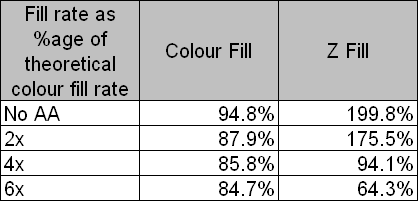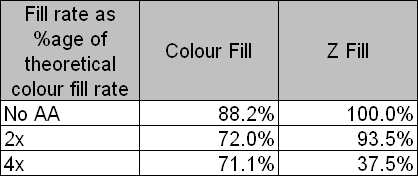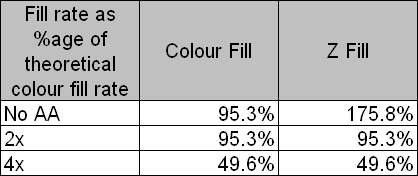FrameBuffer
Banned
Kaotik said:RV570 isn't really "cutdown" R580 with those specs, since R580 is 16-1-3-1, that thing has double the z units
I certainly hope that stays true, ..
From the very launch of the 1x00 series 3 things have always stuck in my mind as I thought "My ultimate design video card would have these ________ features,."
namely:
1: 512bit ring bus memory architecture
2: 3:1 Rv530 shader ratio
and lastly
3: Rv515 double Z
from the very outset one could see that the rv560 (1600)'s 3:1 ratio was the future and it didnt take long to theorize (rightly so) that the 580 would basically be 4 RV530 quads each with 3:1 ratio of shader processors. So that gets us to where we are today .. however that leaves the doiuble Z offered from the Rv515 seemingly abandoned. IMHO the 515 is great in it's own right (small package, low power, Dbl-z, 8*32 memory possible).
Correct me if I am wrong however iirc, the Rv530 (1300) did exceptionally well when 2x FSAA is applied. I believe it was said by some to be "free fsaa",.
so add this "free fsaa" via the dbl-z (correct?) with the 3:1 ratio and ring bus memory controller and it would seem that you have a very forward thinking product that uses tech that is already in place.
Again purely speculative on my part however I really HOPE to see a higher performance part (250-350 USD- 256bit, 12-16 pipe GDDR3) in a X-X-3-2 config.
then again Im still waiting for dongleless 1800 Xfire and x800 series cards.



